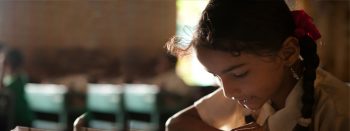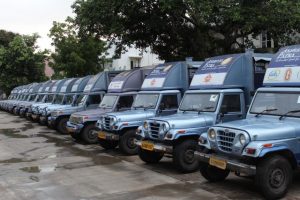The Akshaya Patra Organisation is providing mid-day meals to over 1.3 million children every day. But how do you know that you can trust the quality of the food being served? The Akshaya Patra Foundation bares all to lay your doubts to rest. Here’s an in-depth accounting of every step, process and precaution put in place to ensure that nothing but healthy, wholesome and hygienic food passes our doors.
Akshaya Patra follows a carefully prescribed food safety plan whilst handling, preparing and storing food, to make sure that no child gets sick because of foodborne illnesses. As a recipient of the Det Norske Veritas Food Safety System Certificate, The Akshaya Patra Foundation is ISO 22000:2005 compliant across eleven kitchens. Akshaya Patra has aimed to uphold the ISO 22000 standard for several reasons: to have a food safety management system in place that ensures that all food being cooked is safe; to demonstrate compliance with food safety regulations; to evaluate customer requirements and satisfaction; to effectively communicate food safety issues to suppliers, customers and other relevant parties and to attain certification of the food safety management system from an external organisation.
The key to healthy food is to have a clean and hygienic cooking environment. The Akshaya Patra kitchens are 5S (sort, simplify, scrub, standardise and sustain) and GMP (good manufacturing processes) compliant, checked with regular audits. The kitchen infrastructure includes all stainless steel 304 grade cooking equipment. The staff follows extremely high standards of personal hygiene from wearing hair caps, face masks, clean uniforms, gloves, gumboots to following stringent hand disinfection.
The vegetables are carefully sifted through to remove any spoiled or damaged ones, cleaned with potable water and sanitised in chlorine water before cutting to reduce the risk of any microbial contamination. Beyond this, the raw material for cooking is accepted only after a thorough quality inspection and the rice is cleaned mechanically and then washed completely.
Safety is of utmost concern even during the cooking process. Cauldrons, trolleys, rice chutes, sambar or dal tanks, cutting boards and knives etc., are sanitised with steam just before use. The kitchens follow a policy of a hundred percent adherence to the recipe and the cooking is executed under the watchful eyes of trained cooks and production supervisors. To reduce any margin for error, other measures like periodic checks on cooking temperatures and batch wise quality checks on the food by quality officers are also undertaken. Once the food is cooked it is packed into steam sterilized vessels. All the food contact surfaces are of either 304 grade stainless steel or food grade plastic.
High quality standards are followed while delivering food to the schools as well. The body of the vehicles is insulated with thermocol to retain the heat inside. The vehicles are water washed with a pressure jet on the previous day, while the cleanliness of the vehicle is again checked before loading the food inside. Stainless steel racks meant for vessels of small, medium and big sizes are laid inside to secure the vessels and prevent spillage. The temperature of the food is checked once more during delivery as well.
Completing the cycle of quality food delivery, all the schools are equipped with a do’s and don’ts list. A daily feedback mechanism is established and responded to in 24 hours, customer complaints are managed within 24 hours and customer satisfaction surveys are conducted to improve the products and services.
At The Akshaya Patra Foundation, we don’t merely want to provide a meal; we want to provide health, hope and above all, happiness to the millions of children in need of it. And we are committed to doing it in a safe and sustainable manner, which will survive the challenges of the future.









